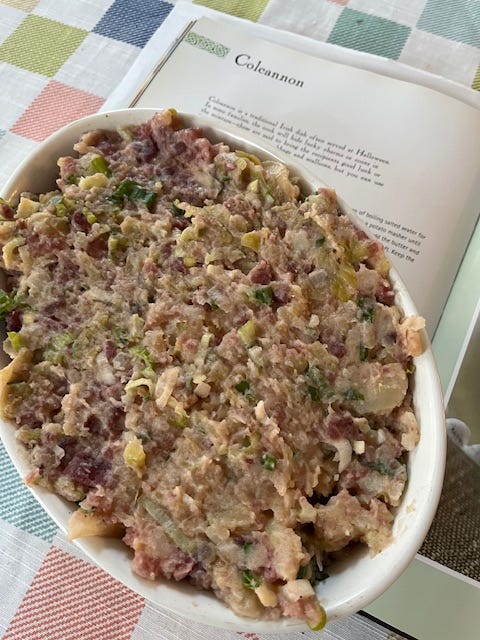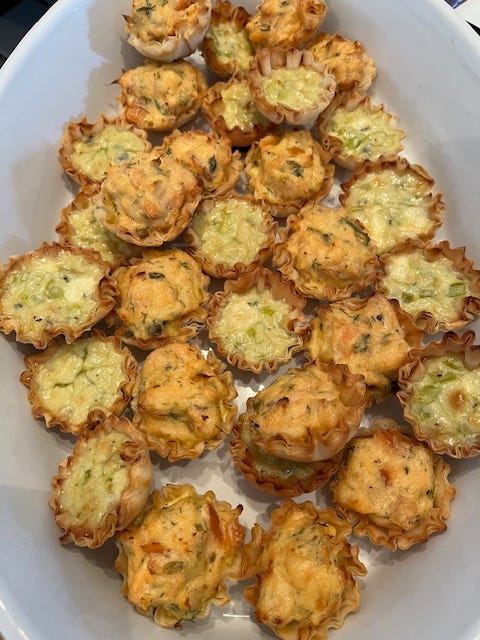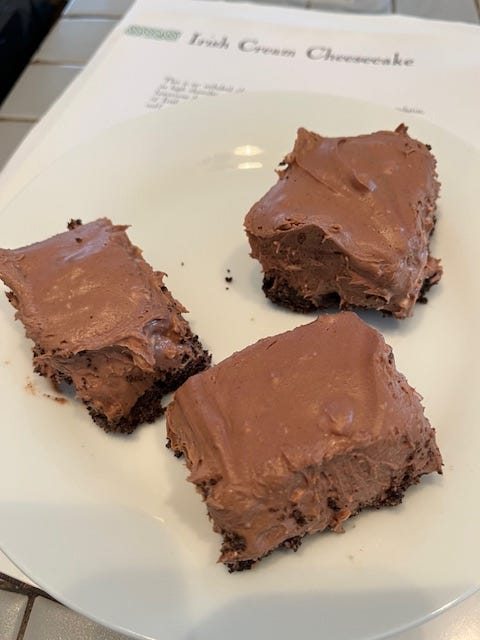Typing furiously on the evening of March 17 because of a quirk in my social schedule, I have either gone out to eat or hosted people every evening for the last few nights.
But I’ve been paging through The Complete Irish Pub Cookbook all week. I’m not sure how this book ended up on my shelf. It has the look and feel of a classier type of cookbook you would find on a remainder table or, way back in the day, on the tables at a Crown Books.
And I say classy because, as a cookbook, it’s actually a really friendly to use resource. It opened flat, with a recipe on one side and an appealing photo on the other. (Many are licensed from Getty Images, which is another reason I think of it as a book made to be an inexpensive gift book.)
It’s divided into appetizers and snacks; entrees; vegetables and sides; and desserts and drinks.
I’m in the middle of a month-long search to have as many corned beef sandwiches from local independent restaurants, and even though I have had 8 already a little more than halfway through the month, I still knew I would be making my one corned beef for St. Patrick’s Day.
I grew up not liking corned beef. As I’ve noted before, my mom was a good, economical cook for a large family, but I don’t remember corned beef showing up on the dinner table too often. And if I didn’t like it, I’m guessing the two main reasons were the texture of the meat and likely accompaniment of overcooked cabbage. (And maybe I pre-hated the meal because of the way the house smelled when I came in.)
As an adult, however, I love corned beef. Mainly corned beef made on site at a restaurant, or by me. I don’t like the processed corned beef you get at a deli.
So I turned to the one corned beef recipe in the book (and, yes, I’m aware that corned beef is likely not as popular in Ireland as it is in the U.S. I was determined to follow this recipe, until I saw that they really start at the beginning, with a brisket or bottom round roast submerged in a cold water and salt brine for ten days in the refrigerator.
I ended up making corned beef my tried and true way — in a dutch oven, including all the corning spices that come in the package, covered with a layer of brown sugar, and with a can of stout poured in. About two hours in I added carrots, potatoes, and cabbage.
The result is delicious, especially with a creamy horseradish sauce.
The potatoes and cabbage I immediately turned into colcannon, with a couple of chopped green onions and a bit of butter and heavy cream added. Colcannon is usually white and green, but when you potatoes with a reddish-purple hue, the result actually looks more like corned beef hash. But it’s delicious.
I made three other dishes that I brought to a St. Patrick’s Day party — two different types of tartlets — one that’s mainly smoked salmon, horseradish, egges, and dill; the other mainly blue cheese; leeks and celery; heavy cream; and eggs. I have leftovers for both — I just need to get some more phyllo cups.
Finally, dessert — a “simple” Irish cream cheesecake.
There are several other dishes in this cookbook — Irish Rarebit (surprisingly, the cheese sauce does not include any ale); sea trout with cider and cream sauce; Dublin lawyer (I’ll see if anyone who reads this asks what this is about); and many others.
“Go n-éirí an bóthar leat,” … and not because you are falling down.









